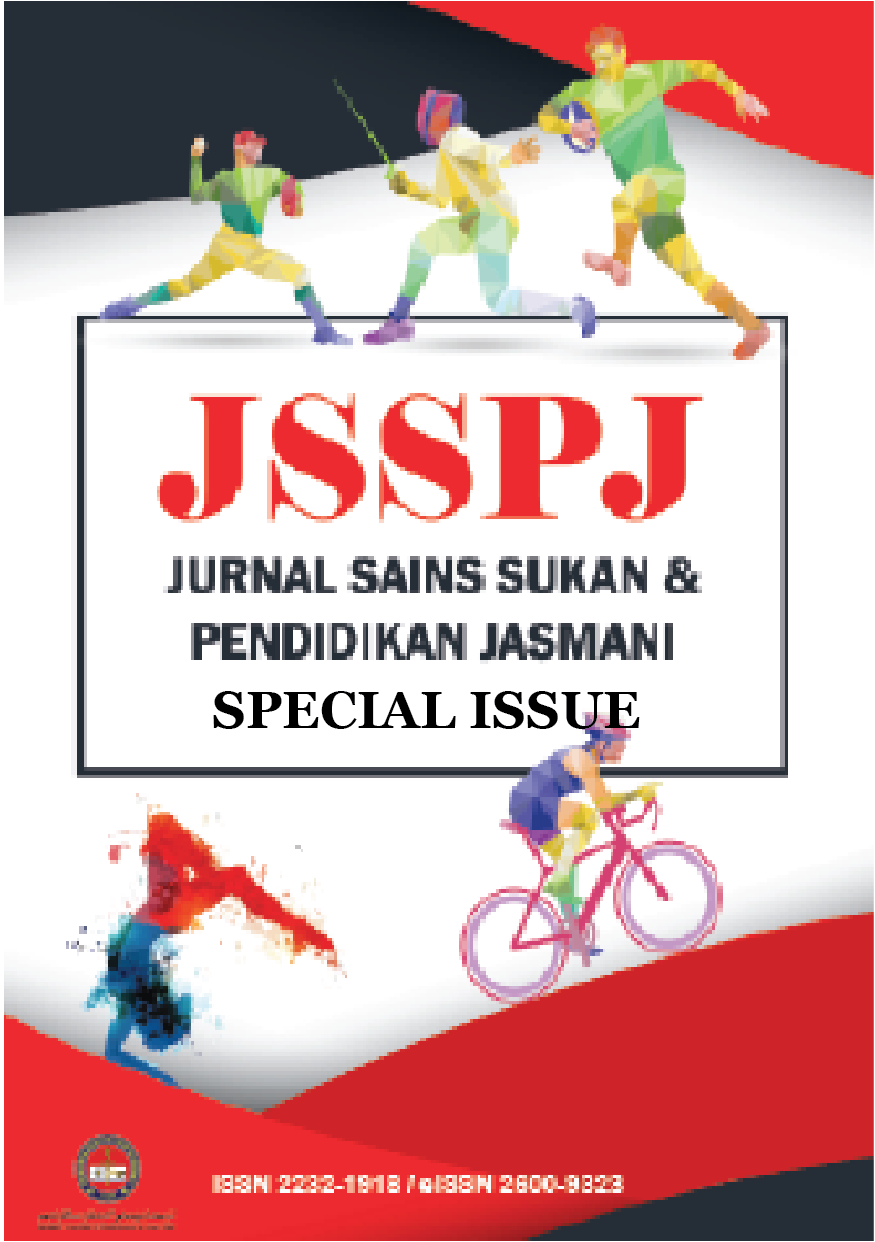The Effectiveness of Judo Training through the Kata-Gategame and Kesa-Gategame Techniques Against Paraplegic Cerebral Palsy Individuals
DOI:
https://doi.org/10.37134/jsspj.vol11.sp.1.2022Keywords:
cerebal palsy, judo technique, coordination, upper body strength, gross motorAbstract
Muscle performance consists of not only strength but also muscle power, rate of force development, and muscular endurance. Although muscle weakness has long been considered one of the primary impairments that contribute to activity limitation in children and adolescents with cerebral palsy (CP), other aspects of muscle performance have received far less attention. Continuous activity or training is said to affect the neuromuscular system and affect those elements. Therefore, this study attempts to examine the effects of judo training through Kata-Gateme and Kesa-Gateme techniques on individual diaplegic spastic cerebral palsy. This subject was classified with Gross Motor Function Classification System (GMFCS) level III by physician and experience this problem since he was born. Subject will undergo a reclining training or known as Osekomi-waza which involves two basic techniques, namely kata-gateme technique (shoulder lock) and kesa-gateme technique (waist lock). This training will continue for six weeks with a frequency of 3 times per week and each session is for 90 minutes. The subjects' upper limb strength was measured using the One Stroke Push Test. The t-test showed there is no significant differences between pre and posttest with t(2) = -4.000, p = 0.057. However, the mean data between pre and post-test showed that there was a 52.70% improvement in upper limb strength. This study suggested that individual with CP will benefit from Kata-Gateme and Kesa-Gateme techniques but may need longer duration to improve his/her upper limb strength.
Downloads
References
Barbado, D., Reina, R., Roldan, A., McCulloch, K., Campayo-Piernas, M., & Vera-Garcia, F. J. (2019). How much trunk control is affected in adults with moderate-to-severe cerebral palsy? Journal of Biomechanics, 82. https://doi.org/10.1016/j.jbiomech.2018.11.009
Cleary, S. L., Taylor, N. F., Dodd, K. J., & Shields, N. (2019). Barriers to and facilitators of physical activity for children with cerebral palsy in special education. Developmental Medicine & Child Neurology, 61(12). https://doi.org/10.1111/dmcn.14263
Clutterbuck, G., Auld, M., & Johnston, L. (2019). Active exercise interventions improve gross motor function of ambulant/semi-ambulant children with cerebral palsy: a systematic review. Disability and Rehabilitation, 41(10). https://doi.org/10.1080/09638288.2017.1422035
Demiral, S. (2011). The Study of the Effects of Educational Judo Practices on Motor Abilities of 7-12 Years Aged Judo Performing Children. Asian Social Science, 7(9), 212–220. https://doi.org/10.5539/ass.v7n9p212
Franchini, E., Del Vecchio, F. B., Matsushigue, K. a., & Artioli, G. G. (2011). Physiological profiles of elite judo athletes. Sports Medicine, 41(2), 147–166. https://doi.org/10.2165/11538580-000000000-00000
Gonzales, M. (2020). Supporting Students with Cerebral Palsy. In Systems Thinking for Supporting Students with Special Needs and Disabilities. Springer Singapore. https://doi.org/10.1007/978-981-33-4558-4_12
Gulati, S., & Sondhi, V. (2018). Cerebral Palsy: An Overview. The Indian Journal of Pediatrics, 85(11). https://doi.org/10.1007/s12098-017-2475-1
Kons, R. L., da Silva Athayde, M. S., da Silva Junior, J. N., Katcipis, L. F. G., & Detanico, D. (2020). Predictors of Judo-Specific Tasks from Neuromuscular Performance in Young Athletes Aged 11-16 Years. International Journal of Sports Physical Therapy, 15(3), 365–373. https://pubmed.ncbi.nlm.nih.gov/32566372
Moreau, N. G., Falvo, M. J., & Damiano, D. L. (2012). Rapid force generation is impaired in cerebal palsy and is related to decreased muscle size and functional mobility. Gait & Posture, 35(1), 154–159.
Moreau, N. G., Holthaus, K., & Marlow, N. (2013). Differential adaptations of muscle architecture to high-velocity versus tradisional strength training in cerebral palsy. Neurorehabilitation and Neural Repair, 27, 325–334.
Nakajima, T., Tokuyasu, H., Okada, R., Tanaka, M., & Hashimoto, A. (2012). Disabled People and the Potential of Judo Rehabilitation ‒ Case Studies of Rehabilitation through Judo in Japan ‒.
Reedman, S., Boyd, R. N., & Sakzewski, L. (2017). The efficacy of interventions to increase physical activity participation of children with cerebral palsy: a systematic review and meta‐analysis. Developmental Medicine & Child Neurology, 59(10). https://doi.org/10.1111/dmcn.13413
Downloads
Published
Issue
Section
License
Copyright (c) 2022 Asha Hasnimy Mohd Hashim, Nik Norbaizura Nik Azman

This work is licensed under a Creative Commons Attribution-NonCommercial-ShareAlike 4.0 International License.





